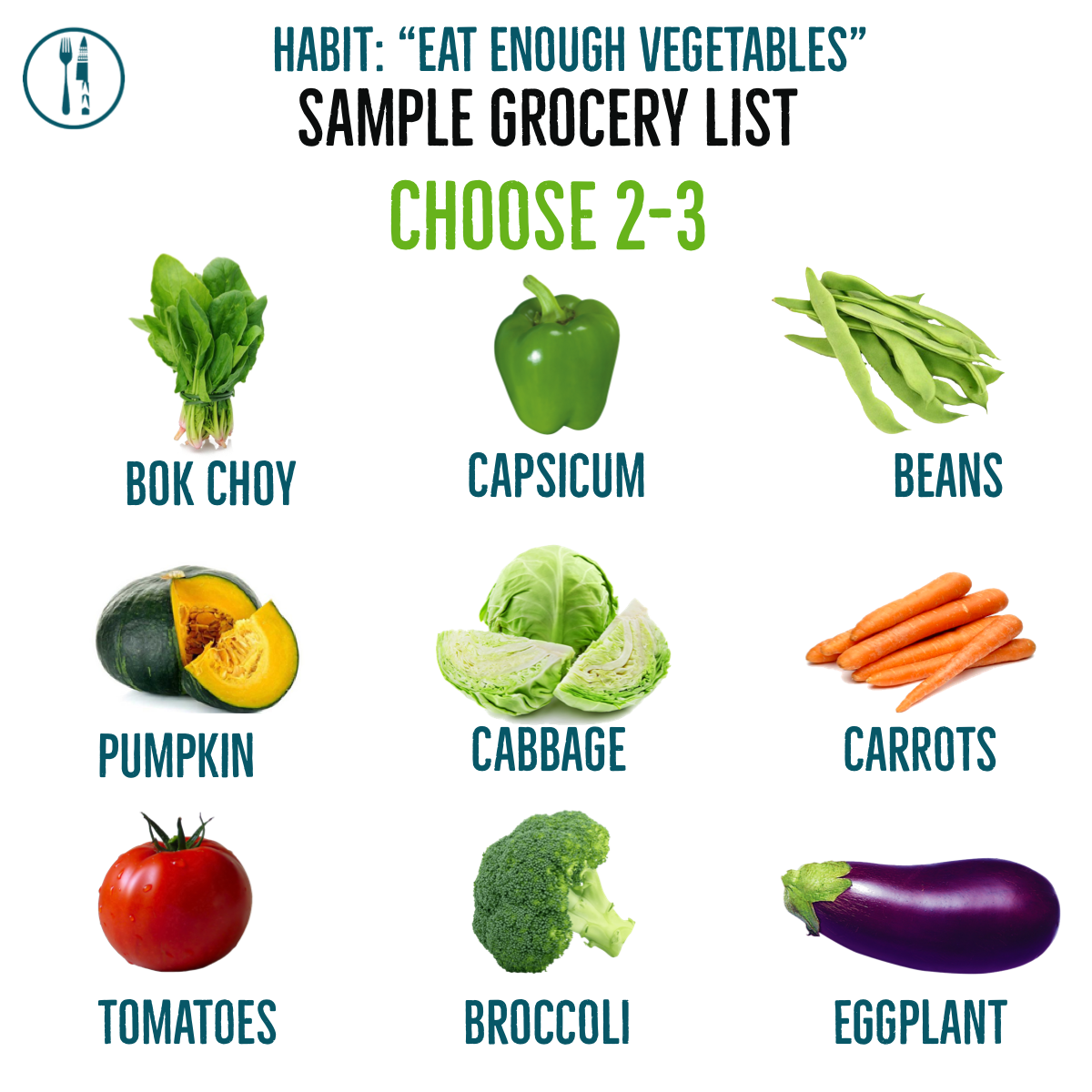“Eat your veggies!”
We are used to hearing this from our parents growing up but the importance of why and how never really stuck. As a nutrition coach, one of the most common habits I am assigning to my clients is for them to eat more vegetables.
Easier said than done.
Why? Because eating your vegetables can be boring. And the first thing that comes to mind when thinking about this, is how bland and flavorless vegetables taste.
But I am going to teach you how to make this habit easier, and how to prep vegetables in a way that is actually palatable to you.
Let’s make eating vegetables for every meal a regular thing for you.

What to eat:
There is no point in forcing yourself to eat vegetables you dislike (at least at first). Start with the vegetables that you know that you can tolerate and like. When I started to improve my nutrition I ate only carrots as my vegetable source.
Because that was the only vegetable that I kind of liked and could tolerate.
Once I became consistent in prepping and cooking carrots, I started to experiment and try other vegetables.
I started to realize that veggies don’t have to be bland, they can taste pretty good!
Fast forward to now, I regularly include:
- Beans
- Pumpkin
- Eggplant
- Bean Sprouts
- Spring onion
- Lettuce
- Broccoli (frozen)
- Capsicum
- Tomatoes (this is a big one because I HATED tomatoes)
And continue to experiment with the veggies I can find on the island. Now don’t get me wrong there are still veggies I dislike and will not eat, like onions for example. But my range of whole foods has otherwise improved a bunch.
Make it easier for you to eat your vegetables by starting with your tastebuds.

HOW to cook:
Steam, boil, oven bake, fry, grill. It is really up to you:
- Steam them on the stove or in a microwave with a bit of water and salt
- Glaze them with olive or coconut oil and bake them for 20-25 minutes
- Marinate them in your favorite sauce and grill them
- Toss them into a pan with a bit of oil and seasoning and fry them for 10 mins.
Personally, I like to steam my vegetables with a bit of seasoning, because it’s really easy and it takes like 10 minutes. But it’s really up to you! Give any of these methods a go and see which method you like.
How much vegetables should I eat? (Portions)
1 portion of vegetables equates to 1 fist size. Generally, you want to aim for 2-3 fists per meal for males and 1-2 fists for females. Ideally, most if your plate should be made up of vegetables.

The Benefits
Some general benefits that you may experience when including more plant foods in your diet are:
- Feeling more satisfied from meals
- Having smooth-moving digestion
- Feeling energized all-day
- Feeling clear-headed and mentally coordinated
- Recovering well from workouts
- Maintaining a healthy weight
Vegetables are nutrient-dense and low-calorie, making them an ideal staple if you’re goal is weight loss. They’re a rich source of fibre and loaded with a variety of vitamins, minerals, and health-promoting phytonutrients. It would be difficult or impossible to get that amount and variety of nutrients from other higher-calorie food options.
Having a complete array of micronutrients (like calcium, magnesium, and other electrolytes) is necessary for fully functioning body processes, like transporting oxygen and sending electrical signals to muscles. Vegetables are pretty important.
With the right amount and variety of vegetables, you’ll feel effects in muscle coordination, appetite regulation, and mental clarity.




